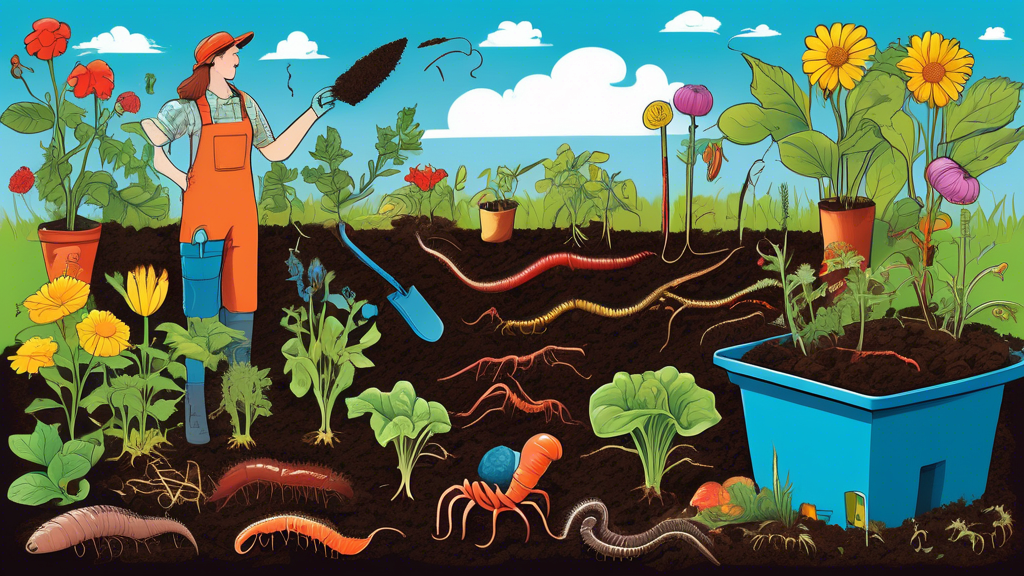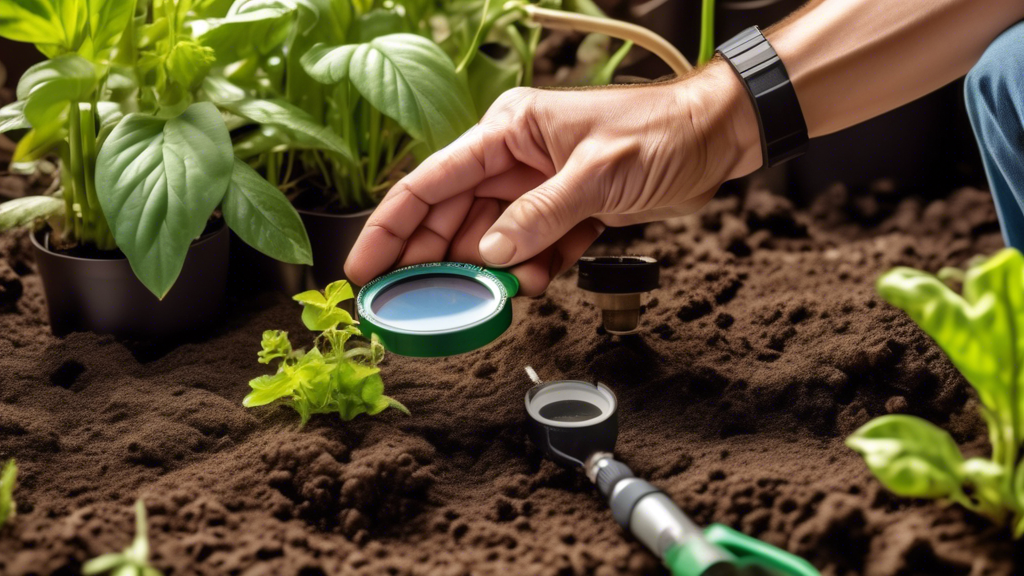
What Are Beneficial Insects? More Than Just “Good Bugs”
Defining the Workforce
Beneficial insects are species that provide valuable services like pollination, decomposition, and—most importantly for this topic—pest population control. They are the unsung heroes of a healthy garden ecosystem.
The Two Main Types of Pest Controllers
Not all beneficial insects operate in the same way. Understanding their strategies is key to appreciating their role.
- Predators: Insects that hunt, kill, and eat other insects (e.g., Ladybugs, Praying Mantises).
- Parasitoids: Insects that lay their eggs on or inside a host pest, with the larvae eventually consuming it (e.g., Parasitic Wasps, Tachinid Flies).
The Hidden Costs of Chemical Pest Control
Harm to People, Pets, and Wildlife
The toxicity and potential health risks associated with synthetic pesticides are a primary concern for many gardeners, extending beyond the target pests to loved ones and local fauna.
The Pesticide Treadmill
Overuse of chemicals leads to pesticide-resistant “superbugs,” creating a vicious cycle of dependency where you need stronger and more frequent applications for the same result.
Collateral Damage to Your Garden’s Ecosystem
Broad-spectrum pesticides are indiscriminate, killing the beneficial insects and pollinators that are crucial for a healthy, productive garden, thus disrupting the natural balance.
Environmental Pollution
Chemical runoff can contaminate waterways and degrade soil health, creating problems that extend far beyond your garden’s border.
Meet Your Garden’s All-Star Pest Control Team
Ladybugs (Ladybird Beetles): The Aphid Assassins
Target Pests: Aphids, mites, scale insects.
Unique Fact: A single ladybug larva can consume up to 400 aphids before it pupates.
Green Lacewings: The “Aphid Lions”
Target Pests: Aphids, thrips, mealybugs, small caterpillars.
Unique Fact: It’s the larvae, not the adults, that are the ferocious predators. Their fierce appearance earns them the “lion” nickname.
Praying Mantises: The Apex Ambush Predators
Target Pests: A wide variety of insects, including caterpillars, beetles, and grasshoppers.
Unique Fact: They are generalist predators and may also eat other beneficial insects, so they are best used as a supplemental force.
Ground Beetles: The Nocturnal Nightwatch
Target Pests: Slugs, snails, cutworms, and other soil-dwelling pests.
Parasitic Wasps (Braconid & Ichneumonid): The Silent Assassins
Target Pests: Tomato hornworms, caterpillars, aphids (by laying eggs inside them).
Unique Fact: If you see a tomato hornworm covered in what looks like grains of rice, those are the cocoons of parasitic wasp larvae. The hornworm is already doomed, so you should leave it be!
Beneficial Insects vs. Chemical Pesticides: A Head-to-Head Comparison
| Factor | Chemical Pesticides | Beneficial Insects |
|---|---|---|
| Cost-Effectiveness | Recurring cost for products. | One-time purchase or self-sustaining population. |
| Long-Term Impact | Creates resistance and degrades soil health. | Builds a resilient, self-regulating ecosystem. |
| Safety | Toxicity risks to humans, pets, and wildlife. | Completely non-toxic to humans and pets. |
| Specificity | Broad-spectrum, kills good and bad bugs. | Highly targeted to specific pest species. |
How to Attract and Keep Beneficial Insects in Your Garden
Plant a Diverse Buffet
Provide nectar and pollen sources with plants like dill, fennel, yarrow, cilantro, and sunflowers. Using native plants is particularly effective for attracting native beneficial species.
Provide Shelter and Water
Leave some areas of bare ground for ground beetles and create “insect hotels” with bundles of hollow stems and wood. A shallow water source with pebbles for landing is also essential.
Practice “Messy” Gardening
Avoid the urge to be too tidy; leaf litter and plant debris provide crucial overwintering habitat for many beneficial species.
A Unique Strategy: Use Companion Planting as a “Pest Signal”
What most people don’t know: You can use “trap crops” strategically. Plant a sacrificial crop that pests love (like Nasturtiums for aphids) near your valuable plants. The pests will congregate there, creating a concentrated food source that makes it easy for beneficial insects to find and control them.
Frequently Asked Questions (FAQs) About Beneficial Insects
Can I buy beneficial insects online?
Yes, many reputable suppliers sell live insects. The key is to release them properly (e.g., at night, after watering) and ensure your garden can support them with food and shelter.
Will beneficial insects leave my garden?
They will if there’s no food (pests or pollen) or shelter. The goal is to create a habitat so inviting they take up permanent residence and establish a reproducing population.
Are there any downsides to using beneficial insects?
It requires patience and a shift in mindset. You must tolerate a low level of pests to maintain a food source for your beneficials. It’s about balance and management, not complete eradication.
Can I use them indoors or in a greenhouse?
Absolutely! They are highly effective in enclosed environments. Predatory mites for spider mites and parasitic wasps for whiteflies are commonly and successfully used in greenhouses.
Conclusion: Partnering with Nature for a Healthier Garden
Harnessing the power of beneficial insects is not just a pest control tactic; it’s a philosophy. It’s about fostering a thriving, vibrant, and sustainable ecosystem in your own backyard. By understanding their role and creating a welcoming environment, you move from fighting your garden to working with it. Start small by planting a few beneficial insect-attracting flowers and observe the powerful, natural changes.






